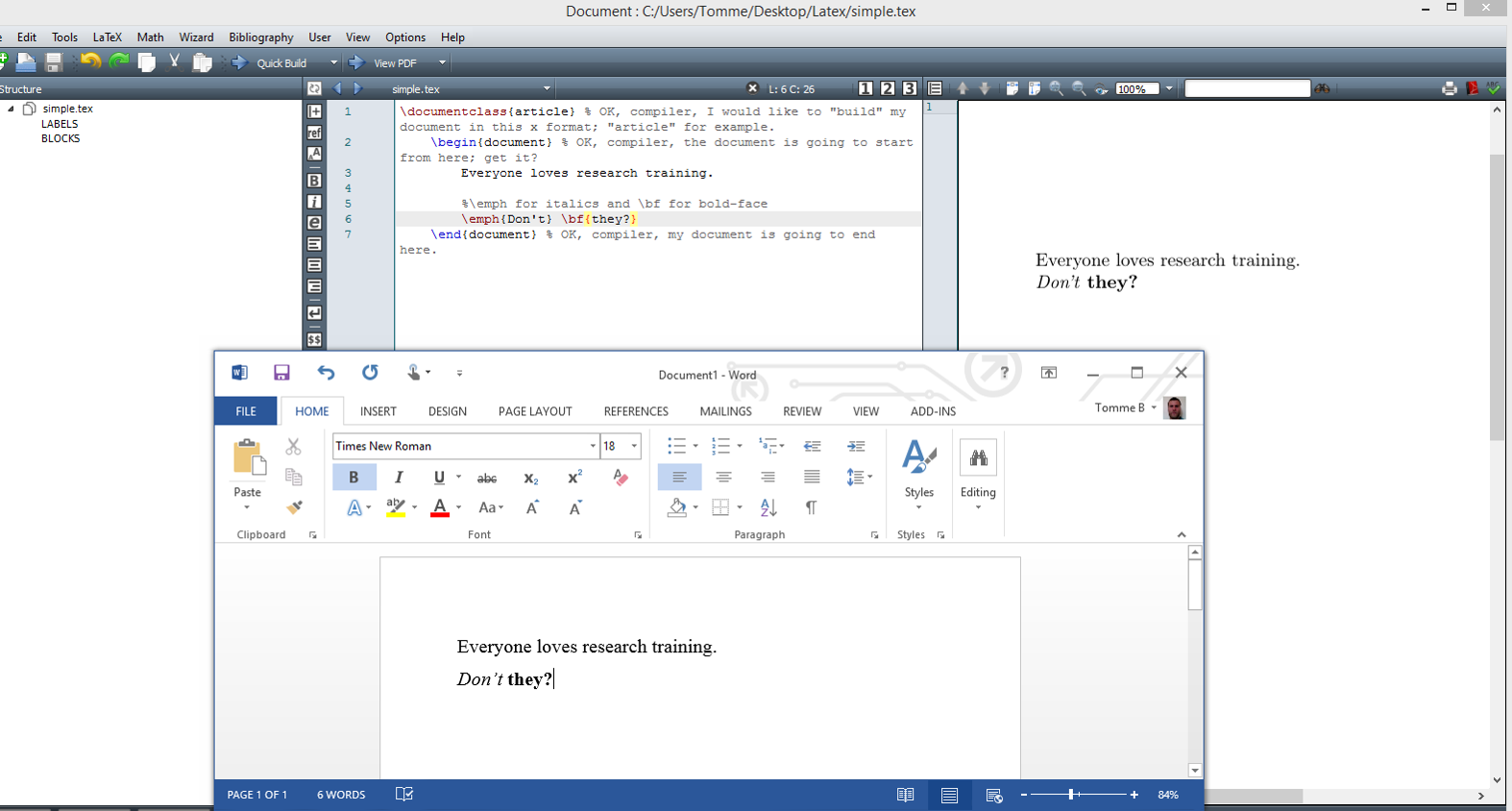What is LaTeX?
Overview
Teaching: 10 min
Exercises: 0 minQuestions
What does LaTeX do?
Objectives
Explain what LaTeX is
Explain how it differs from a wordprocessor
What is LaTeX?
LaTeX (pronounced Laytec) is a document preparation and typesetting system that has been around since the early 1980s. Unlike a traditional word processor such as Microsoft Word or Libreoffice it works by using a markup language and converting this into a document file, typically a PDF. Where exactly things appear on the page is determined by LaTeX itself leaving you to focus on the content of your document. Like with a wordprocessor you can create chapters, sections and subsections, set the style of certain parts of the text, insert citations and cross references, tables, images, equations etc.

Why use it?
- Separates layout and content
- Formatting (mostly) handled automatically
- Good handling of citations and references
- Easy to write maths into a document
- Popular in academic publishing, some journals and conferences will supply a LaTeX template.
- Free and Open Source
- Produces beautiful documents
Why not to use it?
- A bit of an initial learning curve
- Can feel more like computer programming than document writing
- Unhelpful error messages
- Complicated set of addons
- Getting things to look exactly how you want can be hard
- You can’t see exactly what the document will look as you work on it (although some editors have live previews)
LaTeX vs TeX
LaTeX is really a series of macros written in a typesetting language called TeX. These make LaTeX much simpler and easier to use than writing TeX yourself.
Key Points
LaTeX is a document preparation and typesetting system
It uses markup language
Separates style from contents
(Usually) Does a good job of typesetting
Outputs to a PDF or Postscript file